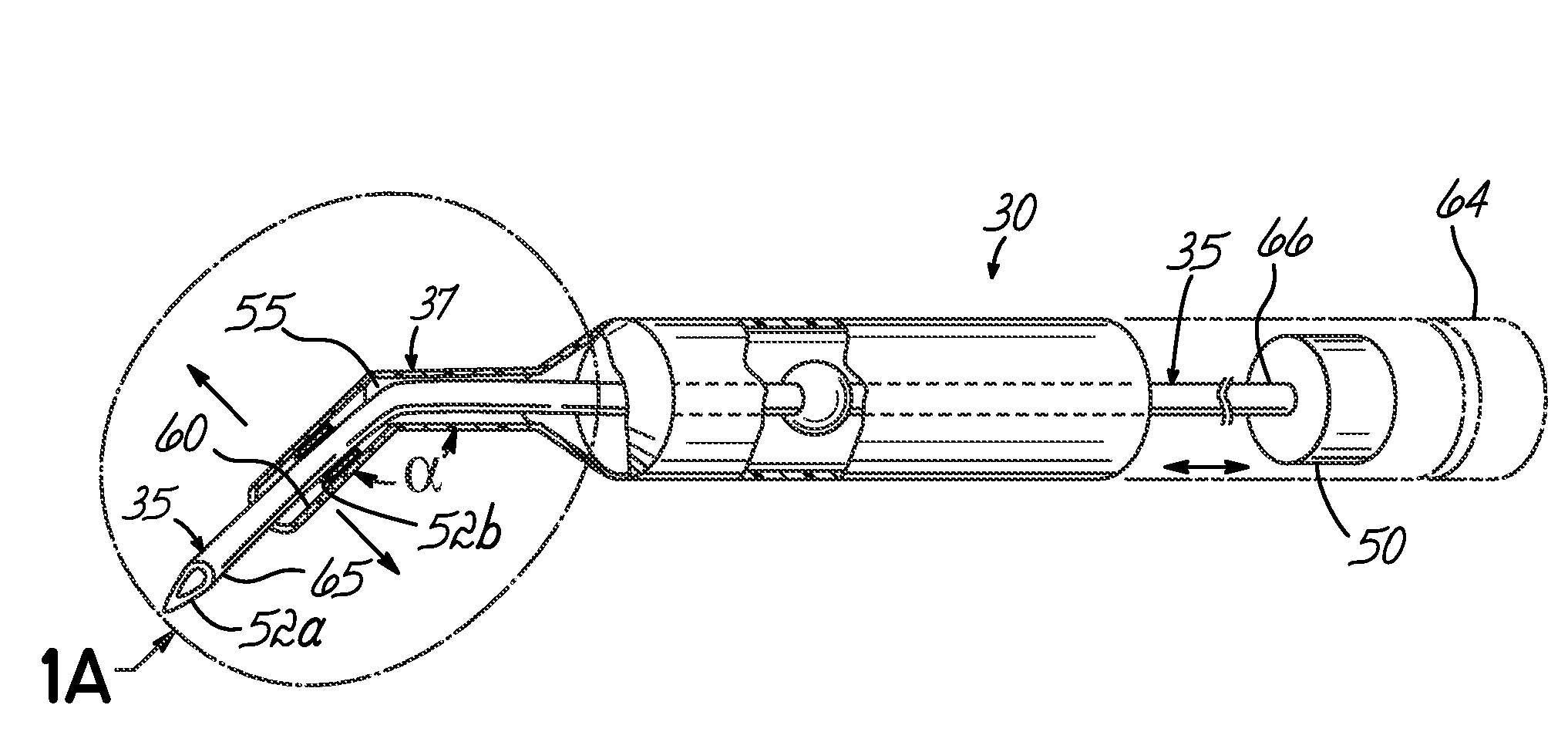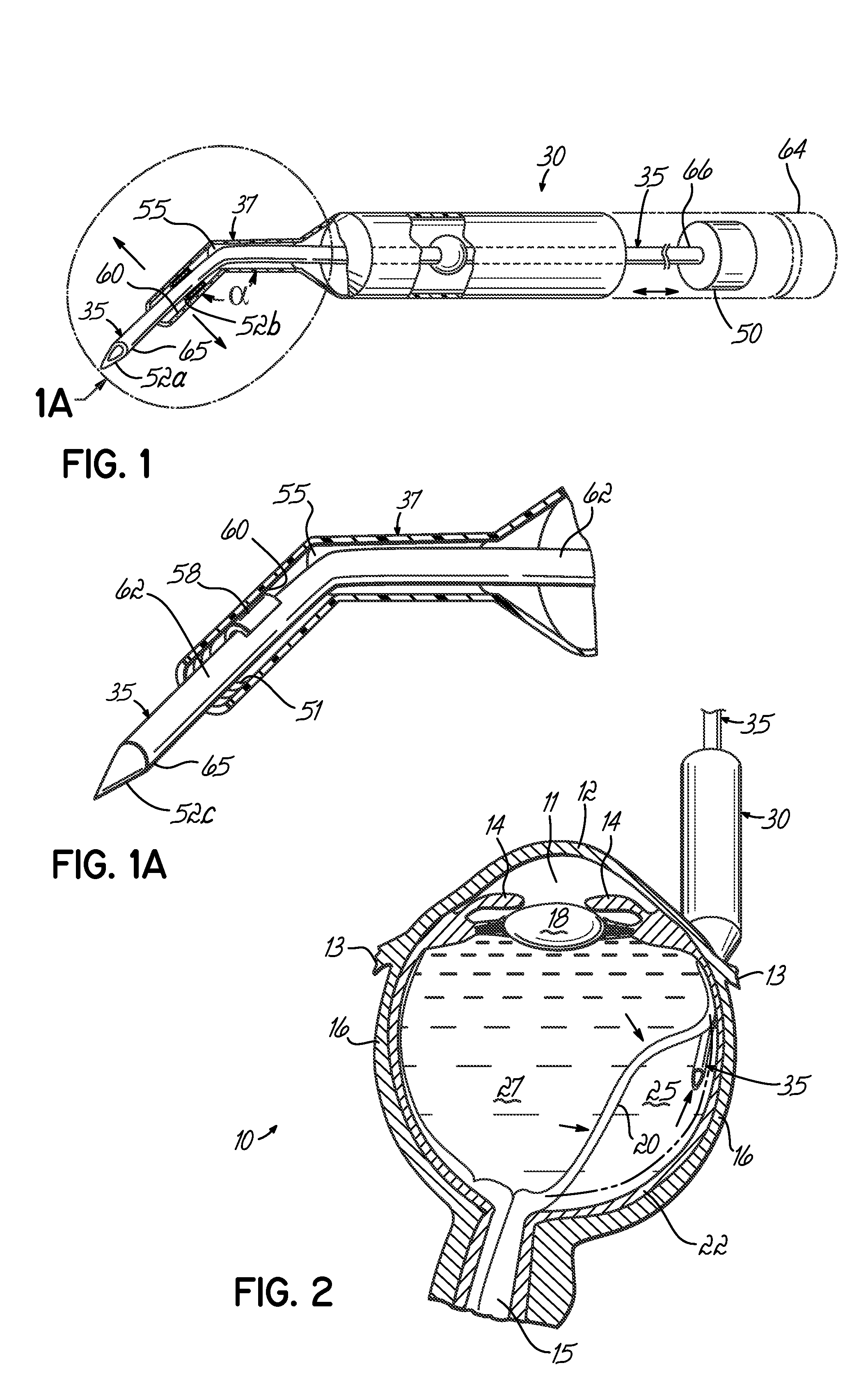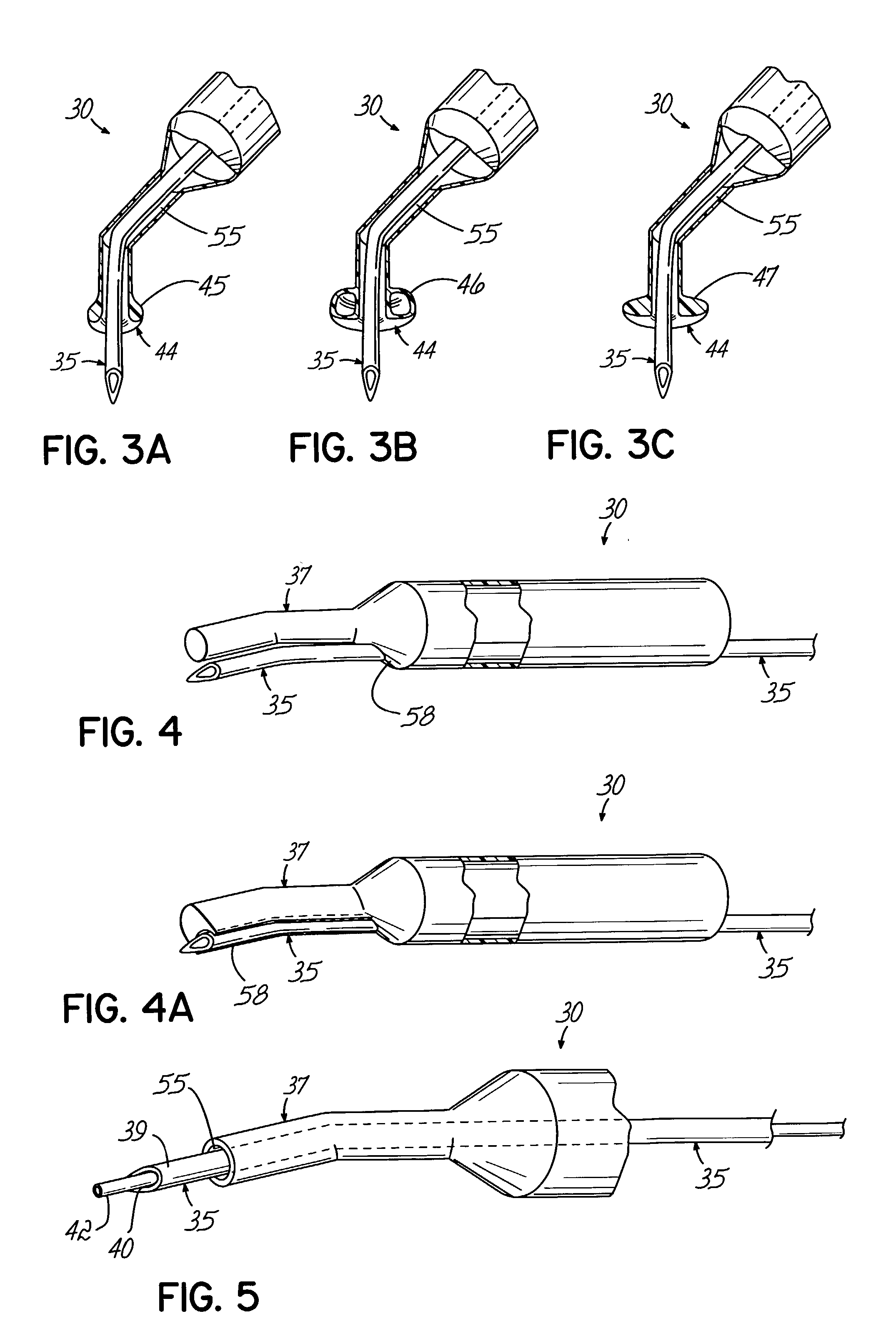Treatment of retinal detachment
a retinal detachment and treatment technology, applied in the field of retinal detachment treatment, can solve the problems of retinal detachment, loss of vision, and none of these methods are entirely satisfactory
- Summary
- Abstract
- Description
- Claims
- Application Information
AI Technical Summary
Benefits of technology
Problems solved by technology
Method used
Image
Examples
Embodiment Construction
[0027]One embodiment of the invention is an apparatus for repairing a detached retina in an eye 10, shown in FIG. 2. The locations of the anterior chamber 11, cornea 12, conjunctiva 13, iris 14, optic nerve 15, sclera 16, lens 18, retina 20 and choroid 22 are illustrated.
[0028]With reference to FIGS. 1, 1A, 4, 4A, and 5, the apparatus 30 may be a fluid withdrawal device 35, such as a needle or hollow tubing, through which fluid may flow, and a guide tube37 or probe for directing accurate advancement, placement, alignment, and / or positioning of the device 35. In one embodiment, the device 35 is a hollow needle for insertion into a subretinal space 25 of an eye 10, and withdrawal of fluid from the subretinal space 25 through the device 35. The needle gauge may range from 21 gauge to 41 gauge. In another embodiment, shown in FIG. 1A, the device 35 is a solid pin and fluid is removed from the subretinal space 25 by flowing adjacent the device 35, for example, by draining under the conju...
PUM
 Login to View More
Login to View More Abstract
Description
Claims
Application Information
 Login to View More
Login to View More - R&D
- Intellectual Property
- Life Sciences
- Materials
- Tech Scout
- Unparalleled Data Quality
- Higher Quality Content
- 60% Fewer Hallucinations
Browse by: Latest US Patents, China's latest patents, Technical Efficacy Thesaurus, Application Domain, Technology Topic, Popular Technical Reports.
© 2025 PatSnap. All rights reserved.Legal|Privacy policy|Modern Slavery Act Transparency Statement|Sitemap|About US| Contact US: help@patsnap.com



